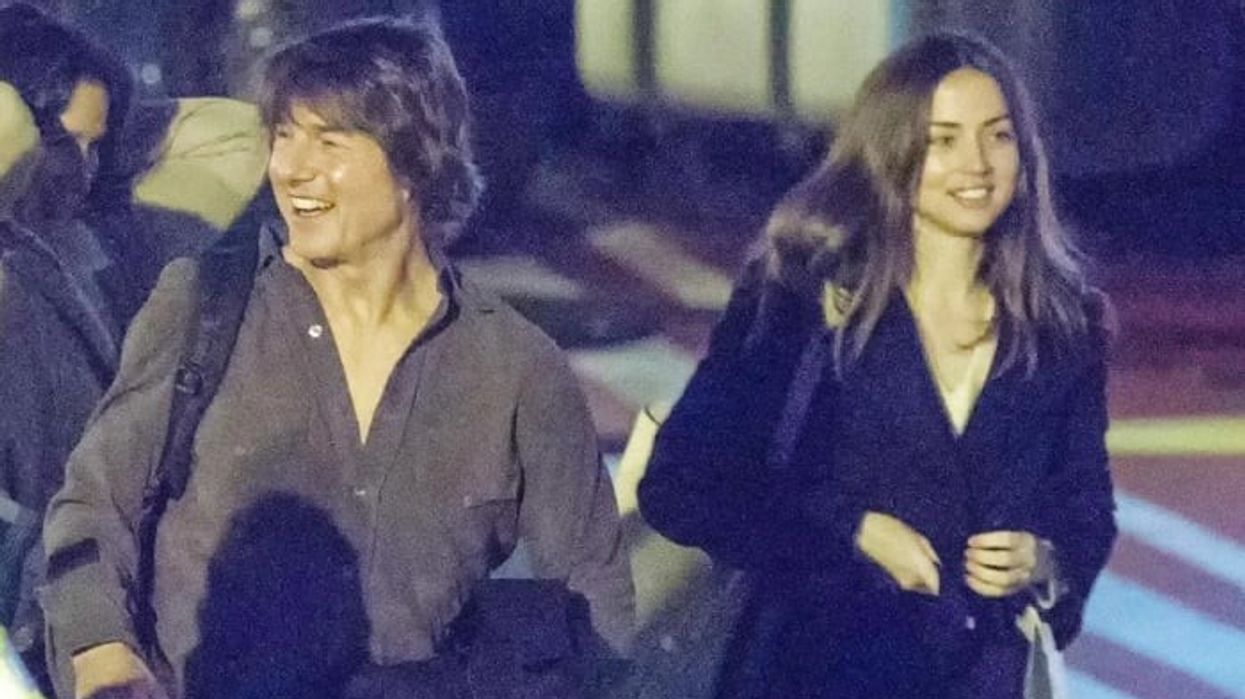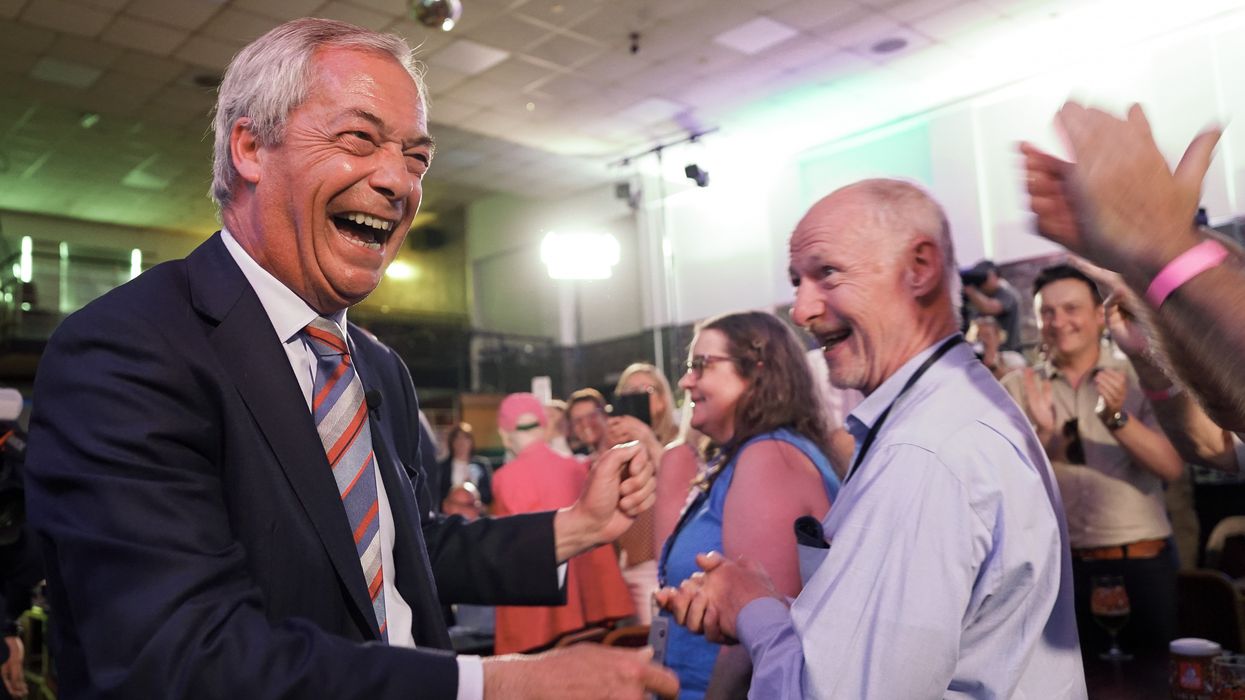PRIME minister Boris Johnson has agreed to a request from the chancellor, Rishi Sunak, for a review to determine whether he stuck to the rules on ministerial declarations.
The move caps days of criticism over the financial arrangements of Sunak’s family and the allegation of “political hypocrisy” as questions emerged over offshore tax havens reportedly held by his wife Akshata Murty, an Indian national.
Sunak was also criticised for a lack of transparency after he admitted to holding a "green card" for US permanent residents until last year.
The chancellor said last Sunday (10) he had written to Johnson asking him to refer his ministerial declarations to Christopher Geidt, the independent adviser on ministers' interests.
Murty, daughter of Indian IT major Infosys co-founder NR Narayana Murthy, said last week she would start paying UK tax on "all worldwide income" as she sought to defuse the controversy over her non-domicile tax status that has cast a shadow on Sunak’s political fortunes.
But Labour frontbench MP Louise Haigh told BBC radio Sunak had "come out on a number of occasions to try and muddy the waters" around his family's tax affairs.
She conceded the non-domicile status enjoyed by Murty - shielding her overseas income from Infosys against UK taxes - was legal.
Haigh, however, queried "whether it was right that the chancellor of the exchequer, whilst piling on 15 separate tax rises to the British public, was benefiting from a tax scheme that allowed his household to pay significantly less to the tune of potentially tens of millions of pounds".
The Independent newspaper reported that Sunak was listed as the beneficiary of trusts set up in the British Virgin Islands and the Cayman Islands to help manage his wife's tax and business affairs.
Sunak was listed in 2020 after he became chancellor and after his previous stint as chief secretary to the treasury, the newspaper said.
"No one in Akshata's family is aware of this alleged trust," a spokeswoman close to the Sunak family said in response.
As chancellor, Sunak oversaw a huge programme of government spending during the coronavirus pandemic, but is now tightening the belt just as Britons face the worst cost-of-living crisis in generations.
Once a leading contender to succeed Johnson as the prime minister, Sunak has seen his popularity plummet in recent weeks, and has accused critics of mounting a "smear" campaign against his wife.
Allies of the chancellor have said Johnson's office is waging a political hit job.
They said the prime minister believed Sunak had not backed him strongly enough during an ongoing scandal into Downing Street lockdown parties.
Johnson last Friday (8) denied knowledge of any briefing operation against Sunak, and told reporters his chancellor was doing an "absolutely outstanding job".
The White House meanwhile declined to comment about Sunak's green card, which he said he only gave up ahead of his first visit to the US as the chancellor in October last year.
Under US law, possession of the card meant that Sunak intended to live in America and pay US taxes, despite serving as Britain's second-most powerful politician.
Sunak and Murty met as students in the US and they married in 2009.
Murty, 42, owns shares worth almost a billion dollars in Infosys, according to the company's disclosure to stock exchanges.
This makes her richer than the Queen, whose personal wealth is estimated at £350 million.
The couple owns at least four properties, including a £7m five-bedroom house in upscale Kensington, London, and a flat in Santa Monica, California.
Murty is also the director of venture capital company Catamaran Ventures which she founded with Sunak in 2013.
She confirmed last week that she "is treated as non-domiciled for UK tax purposes", meaning returns from her Infosys stake are only liable for taxation outside Britain.
Sunak told the Sun newspaper that "to smear my wife to get at me is awful".
He said, "it would not be reasonable or fair to ask her to sever ties with her country because she happens to be married to me".
Murty created her own fashion label, Akshata Designs, in 2010.
According to a 2011 Vogue profile, she works with artists in remote villages to create Indian-meets-Western fusion clothes that are "vehicles to discovering Indian culture".
"I believe we live in a materialistic society," she told the magazine. "People are becoming more conscious about the world they live in. Doing good is fashionable."
(Agencies)
Site Navigation
Search
Latest Stories
Start your day right!
Get latest updates and insights delivered to your inbox.
Related News
More For You

Rescue workers cordon off a structure at the administration block of the Government Health and Education complex, damaged after it was hit by an Indian strike, in Muridke near Lahore, Pakistan May 7, 2025. (Photo: Reuters)
Cross-border violence leaves several dead in India-Pakistan clash
May 08, 2025
INDIAN and Pakistani soldiers exchanged fire across the Kashmir border overnight, India said on Thursday, following deadly strikes and shelling a day earlier.
The violence came after India launched missile strikes on Wednesday morning, which it described as a response to an earlier attack on tourists in Indian-administered Kashmir. Pakistan prime minister Shehbaz Sharif said his country would retaliate.
"We will avenge each drop of the blood of these martyrs," Sharif said in an address to the nation.
India said it had destroyed nine "terrorist camps" in Pakistan in what it called "focused, measured and non-escalatory" strikes. The action followed accusations by New Delhi that Islamabad backed an attack on tourists in Kashmir two weeks ago. Pakistan has denied the charge.
ALSO READ: UK says ready to help India and Pakistan de-escalate tensions
At least 45 people have died on both sides of the border following Wednesday's violence, including children.
Islamabad said 31 civilians were killed by Indian strikes and firing along the border.
New Delhi said 13 civilians and a soldier were killed by Pakistani fire.
Pakistan’s military said five Indian jets had been downed across the border. India has not responded to the claim.
ALSO READ: What is Operation Sindoor, India's strikes in Pakistan?
An Indian senior security source, who asked not to be named, said three Indian fighter jets had crashed within Indian territory.
The largest Indian strike hit an Islamic seminary near Bahawalpur in Pakistan's Punjab province, killing 13 people, according to the Pakistan military.
Madasar Choudhary, 29, said his sister saw two children killed in Poonch, on the Indian side of the border.
"She saw two children running out of her neighbour's house and screamed for them to get back inside," Choudhary said. "But shrapnel got to the children -- and they eventually died."
Muhammad Riaz said Indian strikes had destroyed his home in Muzaffarabad, the main city of Pakistan-administered Kashmir.
"There is no place to live," he said. "There is no space at the house of our relatives. We are very upset, we have nowhere to go."
On Wednesday night, Pakistan military spokesman Ahmed Sharif Chaudhry said there had been firing across the Line of Control and that the armed forces had been authorised to "respond in self-defence" at a "time, place and manner of its choosing".
ALSO READ: India launches strikes on Pakistan after Kashmir attack; dozens killed in border clashes
India’s army on Thursday said its soldiers had used "small arms and artillery guns" at multiple locations overnight and had "responded proportionately". No further details were provided.
India’s defence minister Rajnath Singh said the strikes were a response to last month’s attack in Pahalgam, where gunmen killed 26 people, mainly Hindu men.
New Delhi blamed the Pakistan-based group Lashkar-e-Taiba for the attack. It is designated a terrorist group by the UN. The two countries exchanged threats and diplomatic messages after the incident.
Indian media on Thursday reported high alert in border areas.
"Border districts on high alert," The Hindu reported, while The Indian Express wrote there was "no reason to believe that the Pakistan Army has been chastened by the Indian airstrikes", and that Indian military experts were "aware that Pakistan's armed forces are no pushover".
International leaders have called for calm.
"I want to see them stop," US president Donald Trump said on Wednesday.
Iranian foreign minister Abbas Araghchi is scheduled to meet Indian foreign minister Subrahmanyam Jaishankar in New Delhi on Thursday, after visiting Pakistan earlier in the week.
Analysts said they expected some form of military response from Pakistan.
"India's limited objectives are met," said Happymon Jacob, director of the Council for Strategic and Defence Research in New Delhi.
"Pakistan has a limited objective of ensuring that it carries out a retaliatory strike to save face domestically and internationally. So, that is likely to happen."
He said the situation would "likely end in a few iterations of exchange of long-range gunfire or missiles into each other's territory".
(With inputs from agencies)
Keep ReadingShow less
Most Popular
Current Issue

(Clockwise from this image) Rajindar Singh Dhatt receiving the Points of Light award from prime minister Rishi Sunak in 2023
VE Day: Asian war hero’s granddaughter honours his message of peace
May 08, 2025
THE granddaughter of an Asian war hero has spoken of his hope for no further world wars, as she described how his “resilience” helped shape their family’s identity and values.
Rajindar Singh Dhatt, 103, is one of the few surviving Second World War veterans and took part in the Allied victory that is now commemorated as VE Day. Based in Hounslow, southwest London, since 1963, he was born in Ambala Jattan, Punjab, in undivided India in 1921, and fought with the Allied forces for Britain.
He received an MBE last December for his services to the south Asian community in the UK.
His granddaughter Amrit, 31, who calls him Babaji, told Eastern Eye: “He has been bed-bound for the past two months, but before that, he was very fit and active. He was diagnosed with cancer two years ago. He has always shown great resilience – both mentally and physically – and taught us to treat others with humility and respect.

“These values run very deep in our family and remind us youngsters to appreciate the peace that comes from these values. Just recently, babaji expressed his hope that there would never be another world war, having seen firsthand what division and violence can do, not just to nations, but to humankind and the human spirit.”
For the family, VE Day (Thursday, 8) was more than just a celebration of victory. It’s a day of remembrance and reflection. As a family, Amrit said, they spend this time in honour of not just Dhatt and everything he gave up, but also the sacrifices of other women, children, and men from that time.
Amrit said, “These stories are particularly important from people of minority backgrounds because these soldiers and veterans helped build this country. They didn’t just come to immigrate; they built up this country, protected it, and shaped its history. People need to understand that immigrants weren’t just contributors to the nation – they defended it and completely changed its prospects. It exemplifies the idea of looking beyond fear, injustice, and prejudices towards people of colour, because there should be immense pride in the fact that previous generations helped shape the country.”
The family reflects on how young Dhatt was when he fought in the war that led to the freedom of today and they are grateful for the difference his sacrifices made, Amrit said.

Dhatt joined the Indian Army in February 1941 as a sepoy (private). He was deployed to the Far East campaign, where he fought in Kohima, northeast India, supporting the Allied Forces in breaking through Japanese defenses.
He left the newly-independent Indian Army in late 1949 with the rank of havildar-major. The army veteran served as a physical training instructor from 1942 to 1943 and army store keeper from 1943 to 1949. After the war, Dhatt returned to India before relocating with his family to Hounslow in 1963.
Amrit said, “He wanted to continue his education, but there were financial restraints in the family. When the war broke out in 1941, he decided to join the army, partly out of duty, but also out of necessity to support the family. Babaji always speaks about the army and the pride he felt in serving, as well as the friendships he made while serving in the British Indian Army. “However, there were things he chose not to speak about. I think he possibly suffered from some traumatic stress disorder, though in his generation and culture, such things are not openly discussed, especially by men.
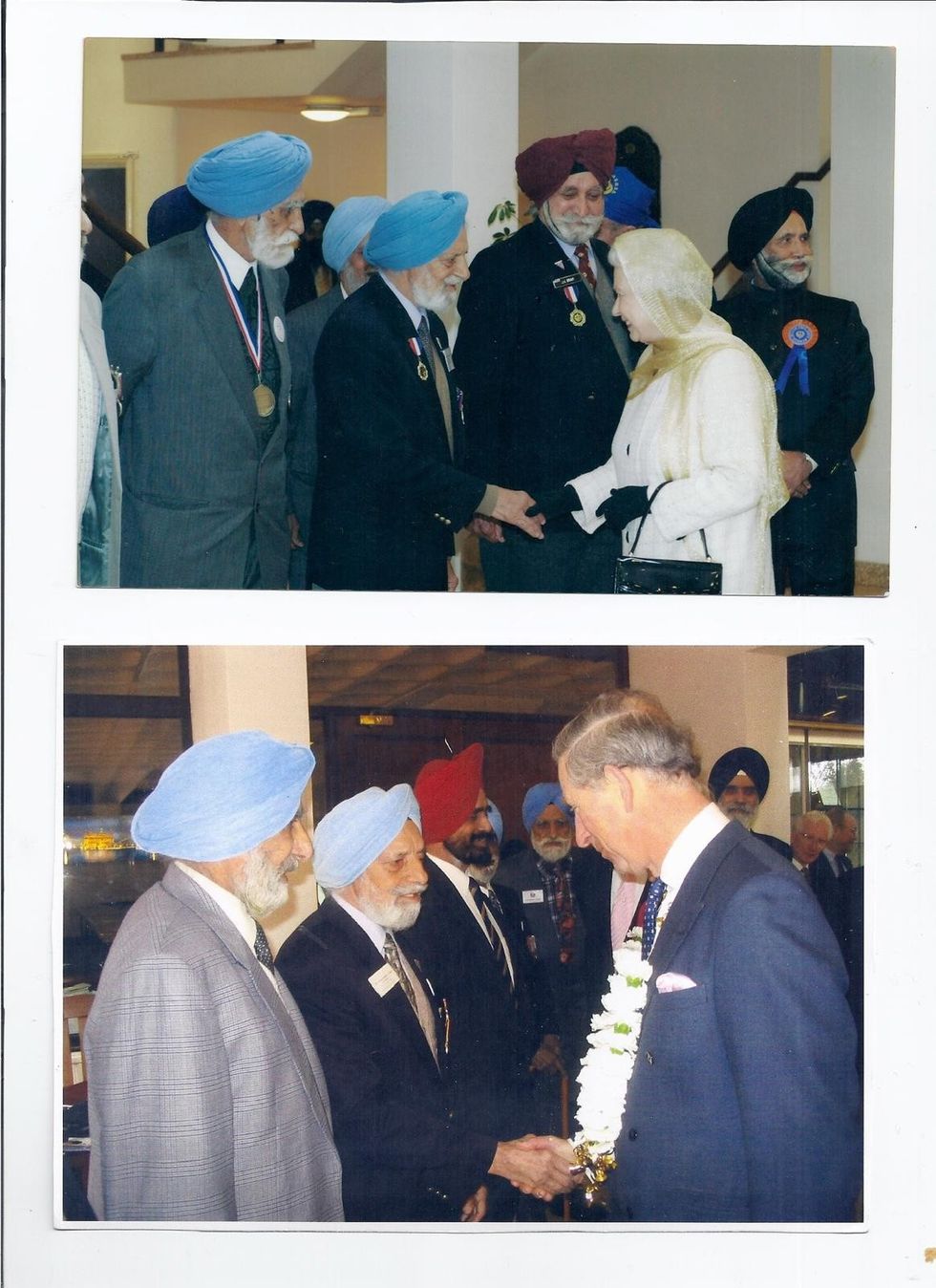
“He often speaks very happily about his memories with fellow soldiers, including the white British soldiers. He especially talks about how they used to play sports together, sometimes football or volleyball. Despite never mentioning or criticising anything negative, his stories hint at segregation between white soldiers and soldiers of colour when they were away from the sports pitch.”
She added, “Despite others openly speaking about racism, my grandfather always focused on the positive, saying the British treated them well.”
When the war ended, Indian soldiers were granted indefinite leave to remain – this was the British government’s way of saying thank you for their service.
According to Amrit, till a few years ago, there was not much recognition of the role of Asian and Commonwealth soldiers in the world wars.
She noted how until the early 1980s, during the 40th anniversary celebrations of VE and VJ Day, white veterans from the UK, Canada, America, New Zealand, and Australia were honoured for their service.
“None of the recognition was directed towards soldiers of colour from undivided India, the Caribbean, or Africa. At that point, Babaji and other veterans in west London created an association called the Undivided Indian Ex-Servicemen’s Association to raise awareness of the contributions of soldiers from these regions.”
Amrit said her grandfather did not complain about how Asian and Commonwealth contributions to the war are remembered. But she said he wished more could have been done earlier.
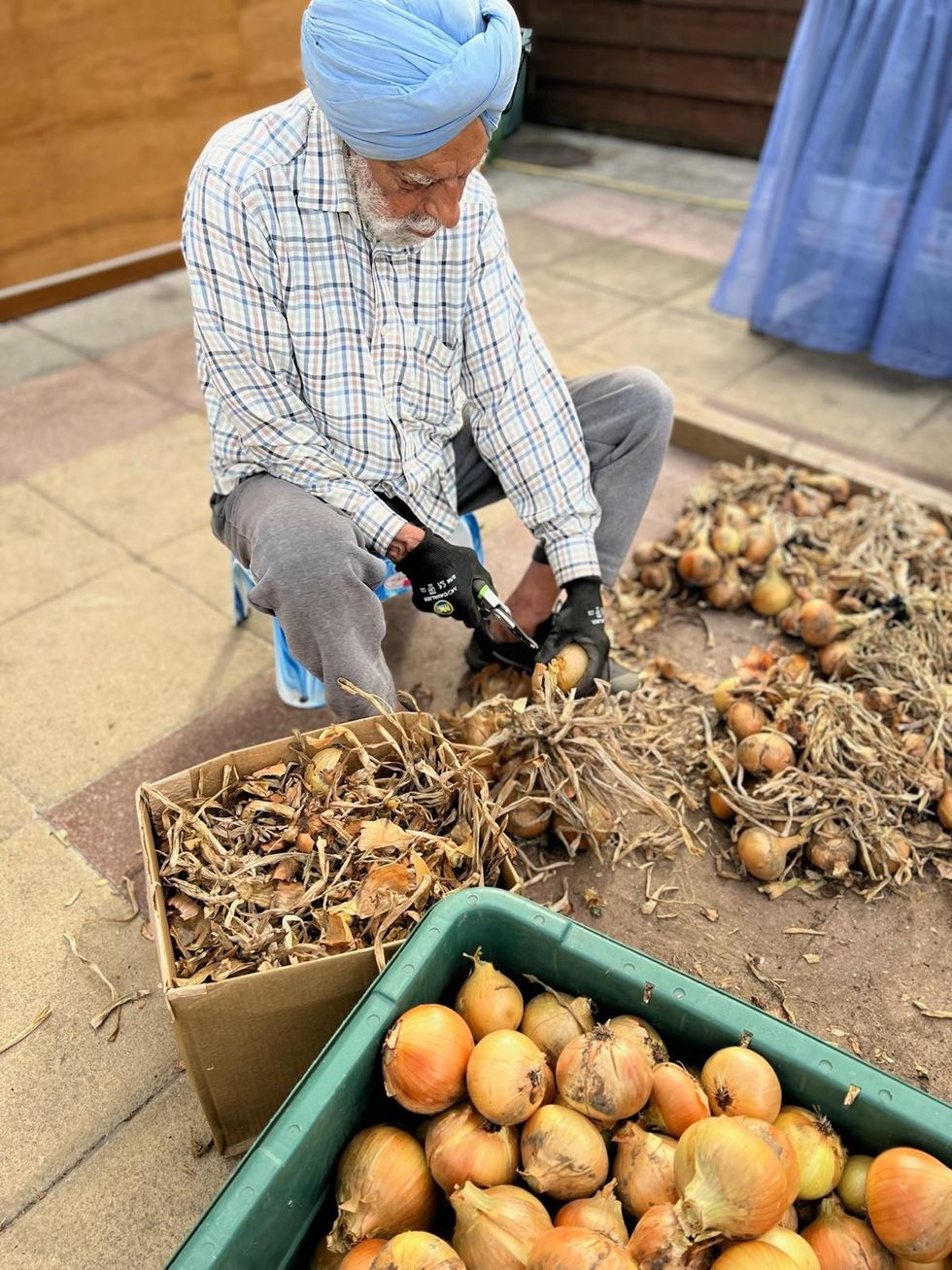
“The association he co-founded came about purely because there wasn’t any recognition; these soldiers were practically forgotten. It’s very important that the Commonwealth soldiers who played a vital role are considered and remembered, and that wider communities and societies understand that,” Amrit said.
“Babaji is glad that recognition is growing, but there’s still a long way to go. While there’s slight disappointment, he is appreciative of the little milestones that have been achieved.”
“His message is that it’s important everyone remembers and understands that the freedoms and things we enjoy nowadays came from the fact that they sacrificed so much in their time. It wasn’t just for a particular country or background of people, but for the wellness of humankind as a whole – people of all colour and backgrounds.

“It’s important that future generations remember the contributions made, and that no one would have to experience something like a world war again, but rather live with peace and respect for one another.”
Dhatt’s wife, Gurbachan Kaur Dhatt, passed away in 1990. His elder son, Parminder Singh Dhatt (Amrit’s father) is based in the UK, while another son, Jasvinder Singh Dhatt, lives in New Jersey, US. The Dhatt family has seven grandchildren and three great grandchildren now.
Describing her grandfather as a “very positive man”, Amrit added, “Until February, he was very independent. He has always been very high-spirited and never wanted to feel like a burden. Even now, he jokes with us family members, saying, ‘You guys are telling me I can’t do it, but I know I can.’”
Keep ReadingShow less
Nandy signs UK-India cultural ‘treaty’
May 08, 2025
LISA NANDY has established herself as one of the most important members of Sir Keir Stamer’s cabinet by signing what appears to be a far-reaching cultural agreement with India during a four-day visit to Mumbai and Delhi.
Britain’s secretary of state for culture, media and sport said: “In the arts and creative industries, Britain and India lead the world, and I look forward to this agreement opening up fresh opportunities for collaboration, innovation and economic growth for our artists, cultural institutions and creative businesses.”
After her visit, British Indian voters might well feel that in Nandy they have a friend in the government.
She signed the agreement with her equally upbeat opposite number, Gajendra Singh Shekhawat, India’s minister of culture and tourism.
He posted a message on X, as well as photographs with Nandy: “Pleased to have signed the India-UK programme of cultural cooperation with UK secretary of state for culture, media & sport. Aimed at celebrating the deep-rooted bonds between our peoples, this partnership will aid and nurture the voices of our youth, uplift emerging artists, and honour the cultural expressions of our diaspora as well as our marginalised communities.
“Together, we’re building a living bridge of shared stories, creativity, and heritage that connects hearts across borders.”
The venue for the signing was the National Gallery of Modern Art in New Delhi. Nandy was flanked by members of her delegation, including senior representatives of Arts Council England, the British Library, the British Museum, the Natural History Museum, the Science Museum, the V&A Museum and VisitBritain.
A senior gallery official remarked: “Both ministers were very happy to sign this pact. And it will foster greater cultural cooperation between the two countries, which have a long-shared history.”
According to DCMS (department of culture, media and sports), “the UK’s arts and culture, creative industries, tourism and sport sectors are set to benefit from a major new cooperation deal and economic links with India, as the government delivers on its ‘Plan for Change’ to boost growth and opportunity”.
“The agreement will open the door for increased UK creative exports to India and enable more partnerships between UK and Indian museums and cultural institutions, helping to grow UK soft power.
“Implementation will involve the British Council in India and the Indian Ministry of Culture, with participation from major UK cultural institutions including Arts Council England, the British Library, the British Museum, Natural History Museum, Science Museum Group and the V&A Museum.
“This has the potential for British museums to launch new partnerships on exhibitions or public programmes that engage the Indian diaspora in the UK.
“The UK will work with India to support best practice and expertise on heritage conservation, museum management and digitisation of collections, including making knowledge contained in south Asian manuscripts more widely accessible, and the protection of cultural property, with both nations committing to combat illicit trafficking of cultural artefacts.”
There are plans to encourage more Indian tourists to come to Britain. VisitBritain forecasts a record 766,000 visits from India to the UK in 2025, up seven per cent on 2024, with travellers spending £1 billion – a 12 per cent year-on-year growth.
In Delhi, VisitBritain CEO Patricia Yates launched the “Starring GREAT Britain” campaign, which draws upon film and TV locations as a driver for inward tourism in the UK.
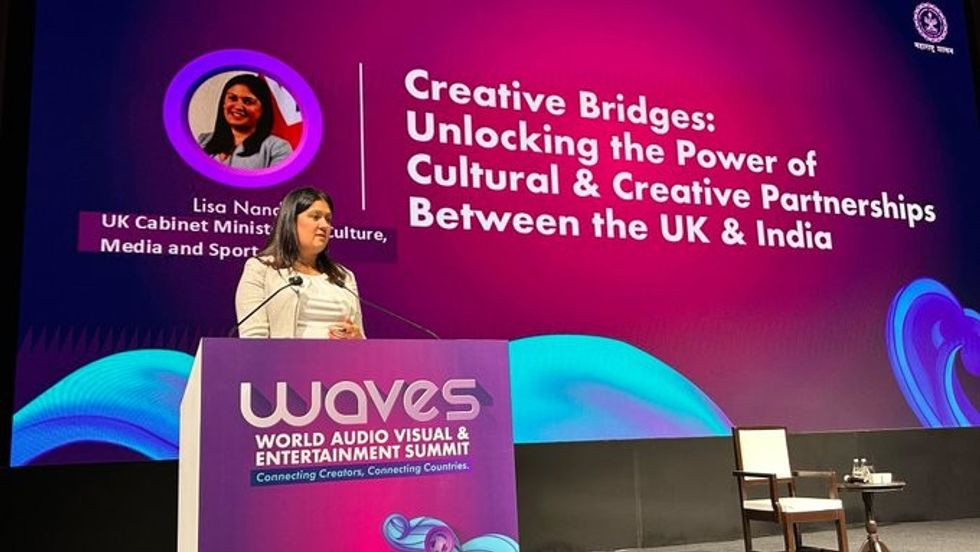
There already exists a tourist map of Britain, full of dots to show the locations where Bollywood movies have been shot. For example, locations used in hit film Kabhi Khushi Kabhie Gham (2001) include Stowe School and Waddesdon Manor, both in Buckinghamshire, and Blenheim Palace in Oxfordshire. But the map needs to be updated.
The British Phonographic Industry (BPI) has reported that British music exports to India experienced a significant 26.3 per cent increase in revenue. This moves India into the top 20 biggest overseas territories for UK recorded music, and there have recently been tours by major British acts, including Coldplay in January and Ed Sheeran in February.
In Mumbai, Nandy delivered a keynote address at the World Audio Visual and Entertainment Summit (WAVES), which was also attended by the Indian prime minister, Narendra Modi.
In her speech, Nandy repeated many of the points she made recently in London at the reception DCMS hosted jointly with the Indian high commission.
She referred to her father, Dipak K Nandy, who arrived in Britain from Kolkata in 1956 and will turn 89 on May 21: “The relationship between India and the UK is strong and deep, and it is personal for me. My father grew up in Kolkata, where my Indian family still live, and I’m deeply proud to be the first-ever Labour cabinet minister of Indian heritage in the United Kingdom.”
She referenced several Indian-origin personalities of note, among them Sophia Duleep Singh, Rishi Sunak, Charli XCX, Nikita Chauhan, Baroness Shriti Vadera, Chila Burman and Gurinder Chadha.
She touched on Modi’s inaugural address: “Nobody could have listened to that opening speech from the prime minister and not understand that this is anything less than a personal signal of intent that he will leave no stone unturned in his mission to power up the untapped potential that exists in the already global success story of Indian film, literature and fashion, and we share that ambition, for you and for us. Now is the time to work together to put rocket boosters under our creative and cultural industries for growth, prosperity and power.
“My ambition is for our cooperation to lead a cinematic revolution that has impacts far beyond the screen.
“Both the UK and India boast rich cinematic traditions and share a deep mutual interest in each other’s storytelling cultures. Already we’re seeing success. British crews working on Indian sets, Indian directors bringing their vision to British audiences, and streaming services that offer a bridge between our cultures.
“Across the creative industries in goods services and especially audio-visual services, India is one of our most important partners. Given the size of our markets and the scale and quality of our television and film sectors, I know we can be more ambitious.”
Nandy said apart from the well-known cultural institutions in Britain, “we also have over 1,700 accredited museums across the UK, in places like Birmingham, Manchester and Leeds, with expertise in every subject you can name, with many potential partnerships available to our Indian counterparts”.
It is significant she called the agreement a treaty: “Behind this treaty – what breathes life into this treaty – is the passion, the creativity and the human connections across our thriving creative industries and the power of friendship and collaboration between our nations.
“In this new era, where at times it feels like we’ve lost the ability to understand one another across the world, let us use our strengths as the greatest storytellers in the world to bring nations together. Let’s empower the next generation of storytellers from Mumbai to Manchester, Kolkata to Cardiff, Bangalore to Belfast, Lucknow to Leicester and Delhi to Dundee, because in film, fashion, music and arts, Britain and India lead the world and we can rise to this moment of a divided world together.”
She pledged: “Together, we will light up the world.”
Nandy visited Yash Raj Films Studios, where many Bollywood blockbusters have been shot.
She met female cricketers at the Sharad Pawar Sports Club, ahead of India hosting the Women’s Cricket World Cup in October this year.
She was also introduced to football coaches involved in the Premier League Primary Stars programme in India, a partnership between England’s Premier League and the British Council to improve physical and sports education in primary schools.
The Premier League, which has a long history of working in India to engage its millions of passionate fans and football communities, has opened an office in Mumbai. At a grassroots level, the league has been running its ‘Premier Skills’ programme in partnership with the British Council to support the development of the community football workforce since 2007. Over the past 18 years, the programme has been delivered in more than 18 Indian states, supporting more than 7,300 coaches, referees and educators, benefiting 124,000 young people.
The Premier League chief executive, Richard Masters, said: “Opening this office marks a significant milestone for the Premier League. It will allow us to operate more effectively locally as we build on our existing work to establish more ways to strengthen our relationship with fans.”
In Delhi, the culture secretary attended a marquee event at the British Council, where she previewed performances from India’s Serendipity Arts Festival, which is due to hold a mini festival in Birmingham from May 23-26 and a large-scale event in London next year.
In the Okhla neighbourhood of Delhi, she toured boutique fashion houses and workshops and met a range of Indian fashion designers with UK links.
Nandy is getting a reputation as a sincere friend of the arts, and she received several expressions of support from major arts institutions.
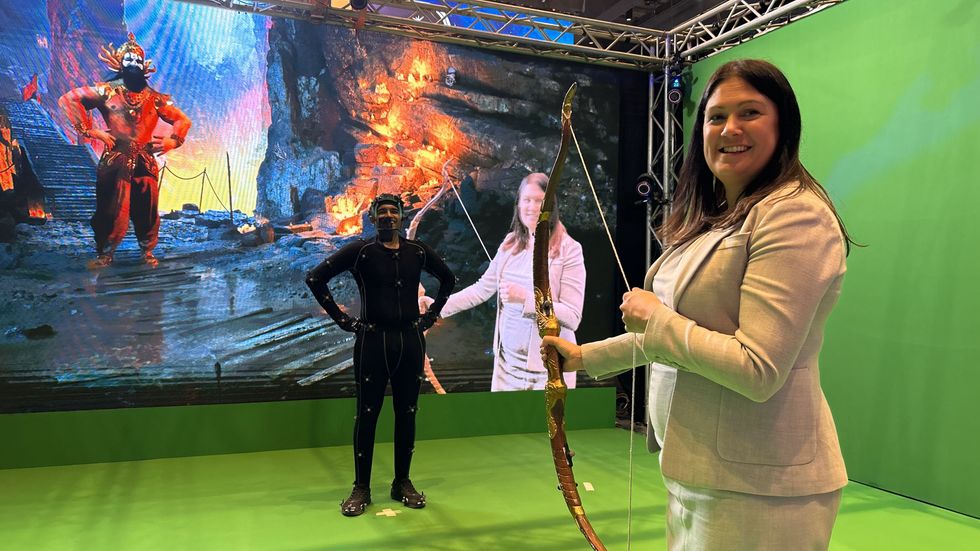
Sir Ian Blatchford, director and chief executive of the Science Museum Group, said: “This commitment from the British and Indian governments to deeper cultural cooperation will further strengthen our relationships with Indian cultural and scientific organisations, helping the Science Museum Group to share ever more fascinating stories of scientific discovery with audiences in both the UK and India.
“Visitors to Science City in Kolkata can explore our Injecting Hope exhibition – which delves into the rapid development of Covid-19 vaccines and was created in partnership with India’s National Council of Science Museums – now on display as part of an international tour that has inspired nearly five million visitors in museums across India, China and the UK.”
Tristram Hunt, director of the V&A, said: “The V&A is delighted to contribute to the new UK-India cultural partnership.
“It will increase our ability to loan more objects from our world-class collection, and build strategic relationships with the booming Indian arts scene across design, fashion, photography, and performance.”
Dr Nicholas Cullinan, director of the British Museum, said: “The British Museum’s collaboration with partner museums across India are some of our deepest and most successful. For example, in Mumbai, we have a groundbreaking partnership with the CSMVS Museum – one of India’s biggest – which is based around the reciprocal exchange of objects, knowledge, and ideas.
“I’m delighted that the UK-India cultural cooperation agreement recognises, at the highest level, the importance of cultural collaboration between our two countries and we look forward to strengthening these partnerships further.”
The director of the Natural History Museum, Doug Gurr, commented: “India is clearly a nation of talented, passionate and prolific wildlife photographers. Indian photographers have consistently been well-represented in our prestigious photography competition Wildlife Photography of the Year.
“This year, we had a record-breaking number of over 300 entrees from India, an increase of 79 per cent.
“It has been our honour to share the awe-inspiring images of our Indian alumni to millions of people worldwide, and we have had the pleasure of collaborating with Dhritiman Mukherjee, Ripan Biswas and Nayan Khanolkar to deliver conservation photography workshops for young people in Kolkata.
“We are thrilled our connection continues at the Visual Poetries Photography Festival in Gujarat this summer, with our competition manager joining their jury and our Wildlife Photography of the Year highlights on display throughout.”
Rebecca Lawrence, chief executive of the British Library, said: “The British Library has a long history of successful collaboration with our peers in India, including on the landmark ‘Two Centuries of Indian Print’ project and through our endangered archives programme.
“We warmly welcome this agreement which will provide opportunities to further deepen our partnerships, exchange valuable professional skills and insights, and strengthen our shared networks of knowledge and culture.”
There was also endorsement of the treaty from the actor Sanjeev Bhaskar and film director Gurinder Chadha.
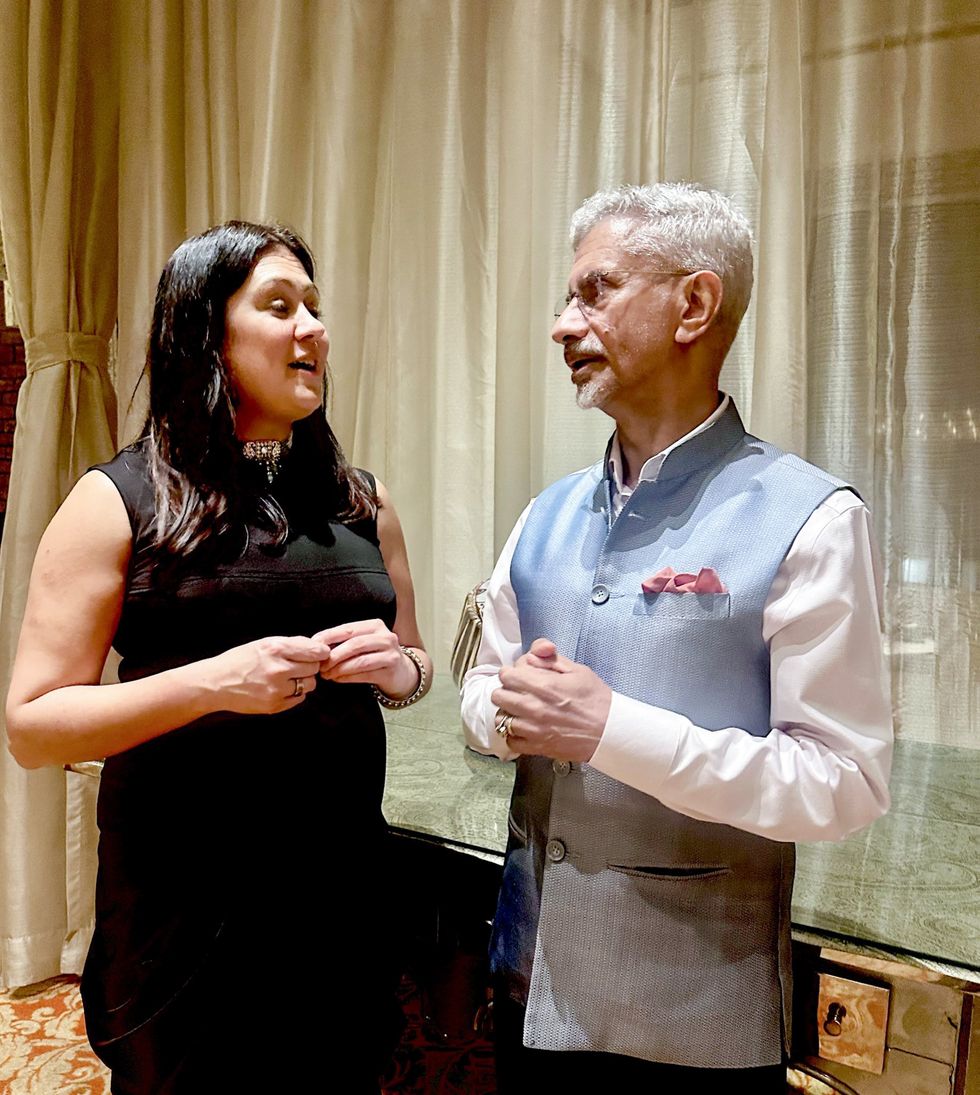
Bhaskar said: “The creative industries are a powerful, enjoyable way to bring people together, so I hope this visit further solidifies a mutual appreciation not just of the long-established arts of both countries, but also the evolving areas of film, music and theatre that are successfully combining artistic traditions from India and the UK to explore and cement what is a unique relationship.”
Chadha added: “As a filmmaker who has spent my career celebrating being British Punjabi and honouring the connections between Britain and India, it is great to see our cultural bonds further strengthened through this new agreement from my friend and colleague Lisa Nandy. Now we have a real opportunity to unlock exciting new creative opportunities for artists and storytellers to the benefit of both our countries.”
In January this year, the government estimated that the creative industries contributed £124 billion to the UK economy in 2023 and employed 2.4 million people, of whom 28 per cent were self-employed (compared with a national average of 14 per cent).
The government has identified the creative industries as one of eight “growth driving” sectors it would prioritise in its industrial strategy.
It classified nine sub-sectors within the creative industries – advertising and marketing; architecture; crafts; product, graphic and fashion design; film, TV, video, radio and photography; IT, software and computer services; publishing; museums, galleries and libraries; and music, performing and visual arts.
Keep ReadingShow less

Rescuers remove a body from a building after it was hit by an Indian strike in Muridke near Lahore, Pakistan, May 7, 2025. (Photo: Reuters)
Reuters
Who are LeT and JeM, the groups targeted by Indian strikes?
May 07, 2025
INDIA said on Wednesday it had carried out strikes on nine locations in Pakistan that it described as sites "from where terrorist attacks against India have been planned and directed." The action followed last month’s deadly attack in Kashmir.
India and Pakistan, both nuclear-armed nations, have fought two wars since their independence from Britain in 1947 over the disputed region of Kashmir, which both countries control in part and claim in full.
New Delhi said last month’s attack in a Himalayan meadow in Kashmir was carried out by a group linked to Lashkar-e-Taiba, a Pakistan-based terror group.
ALSO READ: UK says ready to help India and Pakistan de-escalate tensions
Pakistan denied involvement in the Kashmir attack and said the Indian strikes killed 26 civilians.
Pakistan warned that it would respond "to this aggression at a time, place, and means of our own choice."
India said seven of the nine sites it targeted were being used by Lashkar-e-Taiba (LeT) and Jaish-e-Mohammad (JeM), both of which are designated as terrorist organisations by the United Nations Security Council.
India has long accused Pakistan of supporting Islamist terror groups that operate against Indian interests, especially in Kashmir. Pakistan denies the charge and accuses India of backing separatist rebels in Pakistan, which New Delhi denies.
ALSO READ: What is Operation Sindoor, India's strikes in Pakistan?
Lashkar-e-Taiba (LeT)
Lashkar-e-Taiba, which means "army of the pure", is based in Pakistan's Punjab province. The group has focused on fighting Indian rule in Kashmir.
The UN Security Council says the group has carried out "numerous terrorist operations" against both civilian and military targets since 1993. These include the November 2008 Mumbai attacks in which 166 people were killed.
LeT was founded around 1990 by Hafiz Saeed, who has denied any role in the 2008 Mumbai attacks. The UN says the group was also involved in the July 2006 Mumbai train bombings and the December 2001 attack on India’s parliament.
India said it targeted the Markaz Taiba site in Muridke, near Lahore, where the Mumbai attackers had been trained. Muridke is believed to host the group's headquarters. Markaz means headquarters.
ALSO READ: India launches strikes on Pakistan after Kashmir attack; dozens killed in border clashes
Pakistan has said the group has been banned and neutralised. Hafiz Saeed was arrested in 2019 and convicted of several terrorism financing charges. He is serving a 31-year sentence.
Critics say the group still operates in the region under the cover of charitable activities.
Jaish-e-Mohammad (JeM)
Jaish-e-Mohammad, or Army of the Prophet Mohammad, is also based in Punjab. It was founded by Masood Azhar in 1999 after he was released from an Indian prison in exchange for 155 hostages from an Indian Airlines flight hijacked to Kandahar, according to the UN Security Council.
Pakistan banned the group in 2002 after it, along with LeT, was linked to the 2001 attack on India’s parliament.
The UN has said JeM had ties with al Qaeda and the Taliban. The group is believed to operate from Bahawalpur in Pakistan’s Punjab province.
JeM has claimed responsibility for multiple suicide bombings in Kashmir. India has faced an armed insurgency in the region since the late 1980s, though violence has declined in recent years.
India said it struck JeM’s Markaz Subhan Allah in Bahawalpur, which it described as the group’s headquarters, located about 100 km from the Indian border.
Despite the ban, authorities in the US and India say JeM continues to operate openly. Azhar has not made public appearances in recent years, though reports suggest he remains near Bahawalpur, where he runs a religious institution.
(With inputs from agencies)
Keep ReadingShow less
‘Outpouring of emotion’ as Zia returns after treatment abroad
May 07, 2025
BANGLADESH’S former prime minister, Khaleda Zia, who is also chair of the powerful Bangladesh Nationalist Party (BNP), returned home to cheering crowds on Tuesday (6) after months abroad for medical treatment.
Zia, 79, led the south Asian nation twice but was jailed for corruption in 2018 during the tenure of Sheikh Hasina, her successor and lifelong rival who barred her from travelling abroad for medical care.
The 79-year-old was released from house arrest after a student-led mass uprising ousted Hasina in August 2024.
She flew to Britain in January and returned on Tuesday, BNP spokesperson Shairul Kabir said.
Thousands of party activists welcomed her, gathering on either side of the road leading to the airport, and waving party flags and placards with welcome messages.
Nobel Peace Prize winner Muhammad Yunus, 84, who has led an interim government since Hasina fled into exile, has said polls will be held as early as December, and by June 2026 at the latest.
“This is a significant day for the country and the people of Bangladesh,” Mirza Fakhrul Islam Alamgir, the BNP’s secretary general, said. “The celebration we are witnessing is not only an outpouring of emotion but also a demonstration of our strength.”
Hasina remains in self-imposed exile in India. She has defied an arrest warrant from Dhaka over charges of alleged crimes against humanity.
Keep ReadingShow less
Load More
© Copyright 2025 Garavi Gujarat Publications Ltd & Asian Media Group USA Inc




